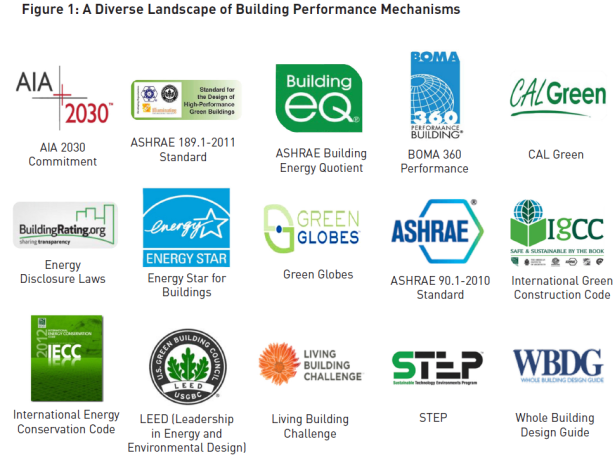Whitepaper courtesy of Legrand North America
Legrand, a power, light and data solution company, has released a whitepaper entitled, “A Guide to the Building Performance Landscape,” which reviews the wide array of initiatives that influence or impact the creation and evaluation of High Performance Buildings (HPB) in the United States and offers insight into the future of HPBs. The whitepaper is the second in a series to explore the evolution and implications of the High Performance Building movement on owners, architects and leaders in the building community.
According to Susan Rochford, Legrand’s vice president of energy efficiency, sustainability & public policy, the High Performance Building landscape is evaluated and regulated through a broad array of mechanisms that include building codes standards, codes and rating systems. Some of these mechanisms are created and enforced by the government, while others are formed by industry collaborations or from a consensus-based process, creating a highly complex landscape for building professionals.
“As expectations for building performance continue to increase, and the diversity of mechanisms available to drive high performance continue to expand, navigating the course has become more challenging,” Rochford said. “The goal of this whitepaper is to serve as a guide to others and advance the understanding and dialogue about the movement.”
The whitepaper analyzed 15 mechanisms and further classified them into five major types based on their fundamental functions and the scope of performance issues they address. Each category is defined as follows:
• Building Energy Disclosure: Require building owners to collect and report annual energy usage.
• Building (Energy & Sustainability) Codes and Standards: Set forth minimum efficiency requirements to achieve targeted reduction in energy use and greenhouse gas emissions.
• Professional and Industry Sponsored Rating Programs: Seek to promote best practices in building performance within a specific industry or professional community.
• Building Ratings Systems and Certifications: Provide prescriptive building performance criteria that require third-party verification.
• Building Design Guidance: Provides highly substantive guidance on building design but does not entail any form of certification or reporting.
Further, the whitepaper explores three interconnected trends that emerged from the mechanism analysis, and highlights a case study of Washington, D.C., where these trends converge.
In conclusion, Legrand makes several key assertions about the future of the building community and the critical role High Performance Buildings will play:
• The building community will expect to see more rigorous energy and sustainability building codes and standards.
• There will be increased demands for building performance transparency including the environmental and health profile of the products and materials used within.
• There will be a steady move toward whole building, life-cycle design reflecting a higher aspiration and new paradigm for the role of buildings in society.
“By examining these mechanisms, it’s evident that pressure on building performance creates a ripple effect on the entire industry, impacting owners, architects, designers, installers, manufacturers, service providers and ultimately, the people that live, play and work in these buildings,” Rochford said. “We have found that the evolution of building performance mechanisms is a function of many significant social, economic and environmental trends at work.”
To improve the performance of its own buildings, Legrand has developed strategies to increase energy efficiencies for significant bottom line savings, employee engagement and industry wide outreach efforts. As Legrand continuously works to improve the performance of their own buildings, the company shares tools and resources to help others on their sustainability journey. In addition to the new whitepaper, all energy saving resources, including Organizing for Results, Power Down Day Toolkit, Legrand’s Corporate Energy Policy, Energy Management Handbook and Energy Project Evaluation Tool, are available at no cost at www.legrand.us/aboutus/sustainability.
To read “A Guide to the Building Performance Landscape” in its entirety, visit http://www.legrand.us/sustainability to learn more.

Report Abusive Comment